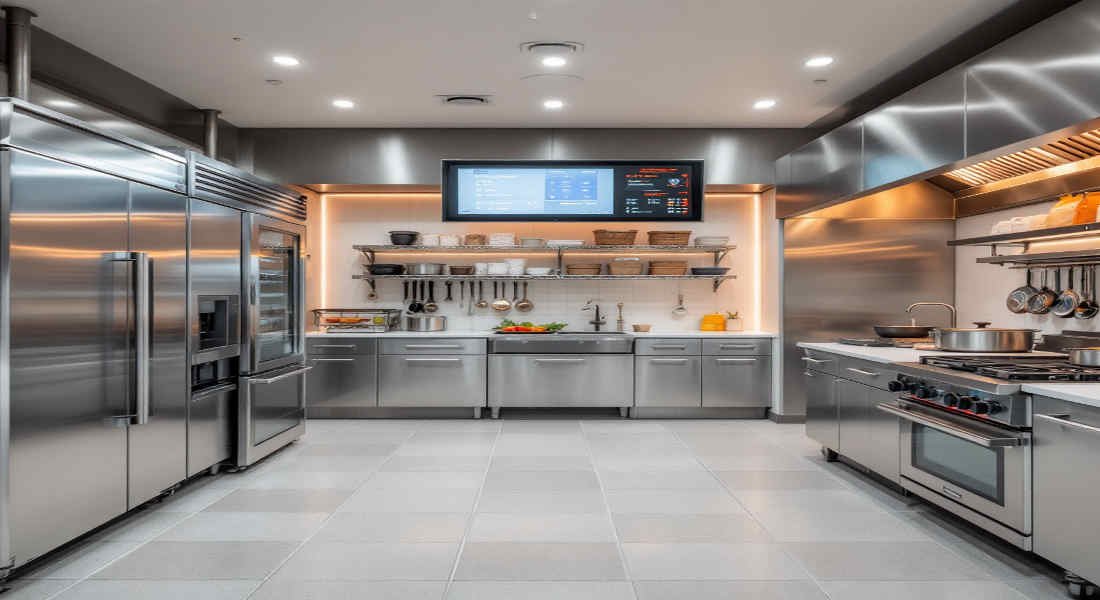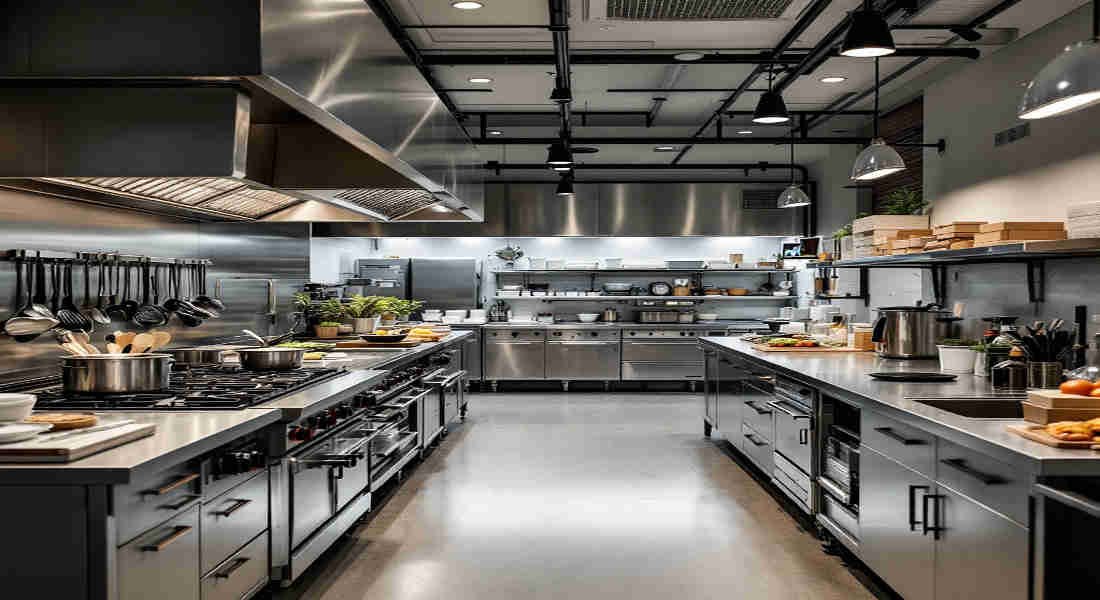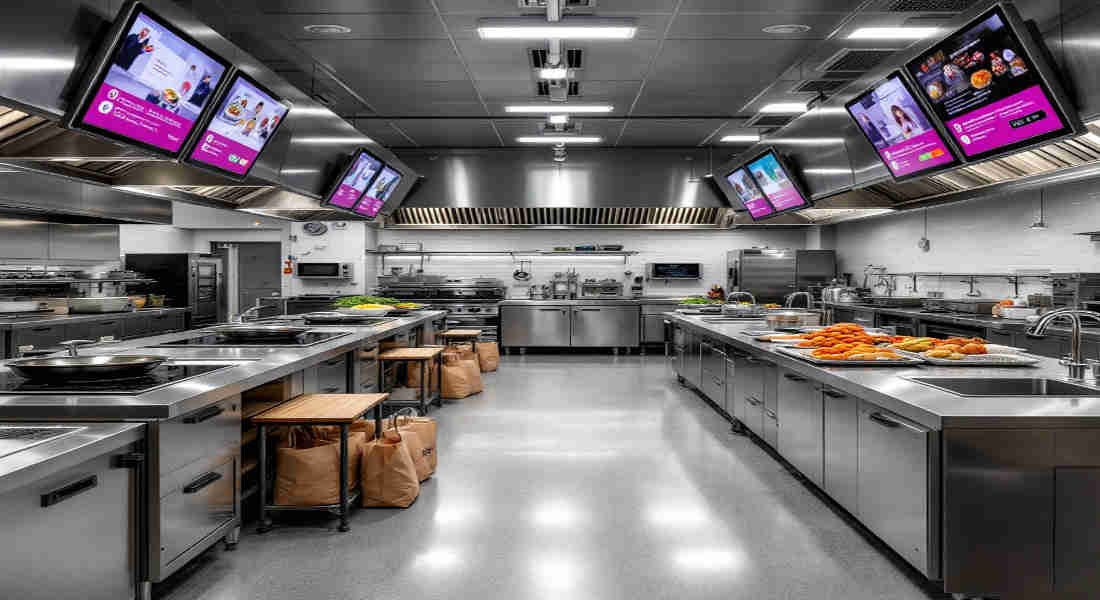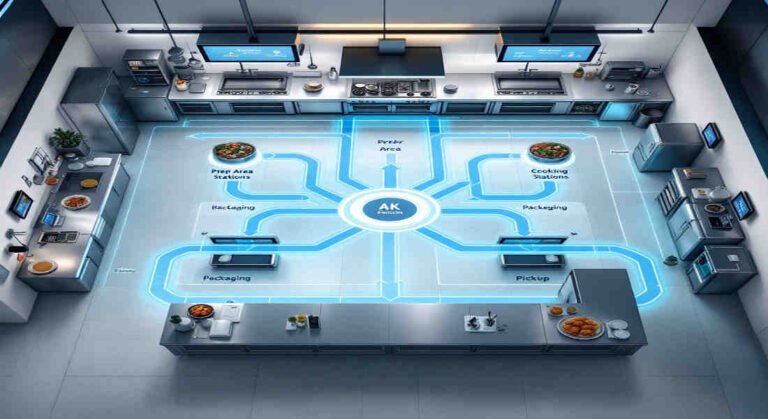In recent years, home-based ghost kitchens have revolutionized the food industry by offering a streamlined and cost-effective way to meet the growing demand for food delivery services. These kitchens, also known as virtual kitchens, operate without a traditional storefront and focus solely on preparing food for delivery.
However, one key aspect of setting up a successful ghost kitchen at home often goes unnoticed: the importance of efficient plumbing installation. Whether you’re whipping up burgers or baking artisanal bread, properly installed plumbing can make or break your kitchen’s functionality.
Think of plumbing installation as a foundation for a smooth-running ghost kitchen. Just like learning to install shower home plumbing fixtures step by step, setting up plumbing for your kitchen involves careful planning, the right tools, and attention to detail.
Understanding Home-Based Ghost Kitchens
What Is a Ghost Kitchen?
A ghost kitchen is a professional cooking space that prepares food solely for delivery or takeout. Unlike traditional restaurants, ghost kitchens don’t have dine-in facilities, which means lower overhead costs.
These kitchens are especially popular among small business owners and entrepreneurs looking to test new food concepts without the financial burden of opening a full-scale restaurant.
Benefits of Operating a Ghost Kitchen from Home
Running a ghost kitchen from home has several advantages:
- Cost Savings: You save on rent, utilities, and staff expenses.
- Flexibility: You can create a menu tailored to your skills and equipment.
- Convenience: Operating from home allows you to manage your time better.
Key Components of a Ghost Kitchen Setup
To set up a ghost kitchen at home, you need:
- Commercial-grade cooking equipment
- Proper ventilation systems
- Adequate storage for ingredients
- Reliable plumbing systems
Why Plumbing Is Crucial for Ghost Kitchens
Plumbing plays a central role in ghost kitchens. It ensures that you have clean water for cooking, proper drainage for waste, and a hygienic workspace. Without a functional plumbing system, food preparation becomes inefficient and unsafe.
The Role of Plumbing in Home-Based Ghost Kitchens
Plumbing Fixtures Typically Required in Ghost Kitchens
When designing a home-based ghost kitchen, it’s essential to consider the following plumbing fixtures:
You may also read (home kitchen fire incident).
- Sinks for washing dishes and ingredients
- Faucets for water supply
- Drains to manage wastewater
- Grease traps to prevent clogging
Kitchen Plumbing vs. Bathroom Plumbing
Although the principles of plumbing remain the same, kitchen plumbing differs from bathroom plumbing in terms of usage and requirements. For instance, while bathroom plumbing focuses on fixtures like showers and toilets, kitchen plumbing prioritizes sinks, faucets, and drainage systems.
Learning how to install shower home plumbing fixtures can provide valuable DIY skills transferable to kitchen plumbing.
Impact of Proper Plumbing on Kitchen Efficiency
Proper plumbing installation directly affects:
- Hygiene: Clean water and efficient waste management prevent contamination.
- Efficiency: Well-installed fixtures save time and reduce water wastage.
- Safety: Avoiding leaks and clogs minimizes risks of accidents and water damage.
Introduction to Installing Home Plumbing Fixtures
What Are Plumbing Fixtures?
Plumbing fixtures, such as sinks, faucets, showerheads, and valves, deliver and drain water. They are integral to any kitchen or bathroom setup.
Types of Fixtures Relevant to Kitchens and Bathrooms
Here’s a quick comparison of fixtures used in kitchens and bathrooms:
Fixture Kitchen Use Bathroom Use
Faucets filling pots, washing dishes washing hands, brushing teeth
Drains : Managing wastewater from sinks , Draining water from showers
Valves Controlling water flow , Controlling shower flow
Showerheads not used in kitchens are Essential for bathing
Basic Tools and Materials Needed for Installation
Before starting any plumbing project, gather these essential tools:
You may also read (ants in my home with salt).
- Adjustable wrenches
- Pipe cutters
- Plumber’s tape
- Sealant or silicone caulking
- PVC, copper, or PEX pipes
Safety Precautions and Preparation Steps
- Turn off the water supply to avoid flooding.
- Wear gloves and safety goggles.
- Keep a bucket handy to catch any residual water.
How to Install Shower Home Plumbing Fixtures: A Step-by-Step Guide
If you’ve ever wondered how to install shower home plumbing fixtures, this section provides a comprehensive guide to get you started.
Shut Off the Water Supply
Locate the main water valve and turn it off to prevent water flow during installation.
Remove Old Fixtures
Carefully unscrew and remove the old shower valve or showerhead. Use a wrench and take your time to avoid damaging pipes.
Install the New Shower Valve
Position the valve at the correct height and angle. Ensure all connections are secure before proceeding.
Connect Water Supply Lines
Use pipes (copper, PVC, or PEX) to connect the valve to the main water supply. Seal connections with plumber’s tape to prevent leaks.
Install the Shower Riser and Showerhead
Attach the riser pipe to the valve and screw on the showerhead. Test for proper alignment.
Seal Around Fixtures
Apply silicone caulk around the edges to create a waterproof seal.
Test for Leaks and Functionality
Turn on the water supply and check for leaks. Make adjustments as needed.
Applying Shower Plumbing Installation Skills to Ghost Kitchen Plumbing
Translating Skills to Kitchen Plumbing
The principles of shower plumbing, like securing connections and sealing fixtures, apply equally to kitchen setups.
Installing Sinks and Faucets
- Connect the sink to the water supply lines using flexible hoses.
- Use plumber’s tape to secure connections.
Ensuring Efficient Water Supply and Drainage
- Install a grease trap to prevent clogs.
- Use sloped pipes for optimal drainage.
Common Plumbing Challenges and Solutions
Challenge Solution
Leaks and water damage. Use plumber’s tape and sealant to secure connections.
Limited space. Opt for compact fixtures and flexible pipes.
Incorrect installation. Follow step-by-step guides or hire a professional plumber.
Tools and Materials Essential for DIY Plumbing
Must-Have Tools
- Pipe wrenches
- Teflon tape
- Adjustable pliers
Recommended Materials
- Flexible pipes
- Durable faucets and valves
Benefits of Professional Plumbing Services vs. DIY
Sometimes, hiring a professional plumber is the best option. They provide:
- Expertise to handle complex installations.
- Insurance coverage for potential damages.
- Long-term solutions that save you money.
You may also read (weight can a home kitchen cabinet).
